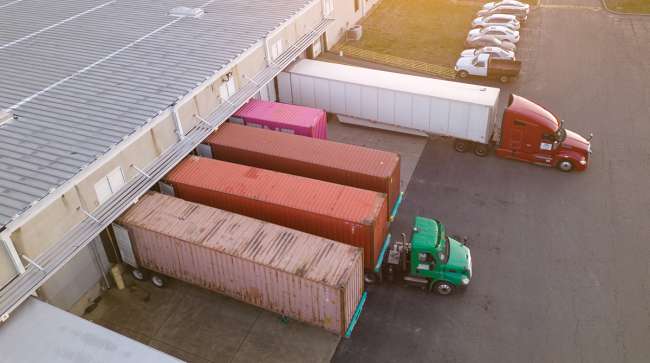Staff Reporter
EPA to Enforce Warehouse Emission Regulations in California

[Stay on top of transportation news: Get TTNews in your inbox.]
The U.S. Environmental Protection Agency’s recent approval of a California law forcing warehouses to reduce emissions or pay mitigation fees tied to truck deliveries now provides stronger enforcement options.
Effective Oct. 11, EPA has rubber-stamped and made enforceable a Southern California air-quality mandate that forces warehouse owners and operators to make changes and invest in actions to lower greenhouse gas emissions associated with their businesses or pay fees to the state. It also includes state reporting requirements.
EPA stated this new action is meant to deter air pollution from warehouse operations that include freight vehicle trips to and from warehouses.
In August 2021, the Diamond Bar-based South Coast Air Quality Management District asked EPA to adopt its “Rule 2305: Warehouse Actions and Investments to Reduce Emissions (WAIRE) Program” that had been enacted a few months earlier. Finally on Sept. 11, EPA announced it will enforce this regulation in California under federal law.
Under the SCAQMD’s jurisdiction are the ports of Los Angeles and Long Beach and some 3,320 warehouses operating in the non-desert parts of Los Angeles and San Bernardino counties, Orange County and nearly all of Riverside County. The rule applies to owners and operators of warehouses with indoor floor space of 100,000 square feet or more.

Brogan
“What this means in plain language is now that the EPA approved the South Coast warehouse indirect source rule [for air pollution] into California’s State Implementation Plans, the state’s plan to address national air quality standards, EPA has authority to sue violators of the rule. Members of the public can also file citizen suits to take enforcement action against violations of the rule,” Michael Brogan, EPA press officer in San Francisco, told Transport Topics.
Importantly, this EPA approval establishes a precedent that it would review any future state submissions of their Indirect Source Review programs for EPA approval, Brogan said.
Adding the federal backing to the Southern California rule enables lawsuits alleging violations of the warehouse law to be filed by anyone in a U.S. District Court action under Clean Air Act Section 304 for citizen lawsuits or by the EPA under Clean Air Act Section 113 enabling the federal agency to seek civil, criminal and administrative penalties, including monetary fines.
Martha Guzman, administrator of EPA’s Pacific Southwest region, praised the federal affirmation of the California warehouse emissions regulation: “These indirect [GHG] sources, such as warehouses, ports and rail yards, all contribute to pollution and therefore must be addressed so our communities can breathe cleaner air.”
The EPA received 16 public comments from proponents and opponents to the rulemaking. A Consumer Reports policy analyst backed the regulation, contending federal adoption of the measure would encourage the use of zero-emission technologies that would benefit neighborhoods surrounding warehouses.

Strother
Jay Strother, association president and CEO of the International Warehouse Logistics Association, told EPA that its acceptance of the rule would raise costs for California’s warehouse operators and eventually be passed on to “virtually all shipped goods for the consumer.”
Last November a coalition of 22 groups, including the Pacific Merchant Shipping Association, California Trucking Association, American Trucking Associations, California Retailers Association, San Gabriel Valley Economic Partnership, Building Owners and Managers Association of California, California Beer and Beverage Distributors and five chambers of commerce in California expressed several areas of concern over legal uncertainties in EPA’s authority to back the state warehouse rule.
In addition, the California Trucking Association last year was unsuccessful in its bid to have a state district judge toss aside the warehouse regulation.
Next year, the warehouses under SCAQMD’s authority will be subject to the rule, which allows them to earn WAIRE points by investing in zero-emission and/or near-zero-emission technologies, developing a WAIRE plan or paying mitigation fees.
Want more news? Listen to today's daily briefing below or go here for more info:




